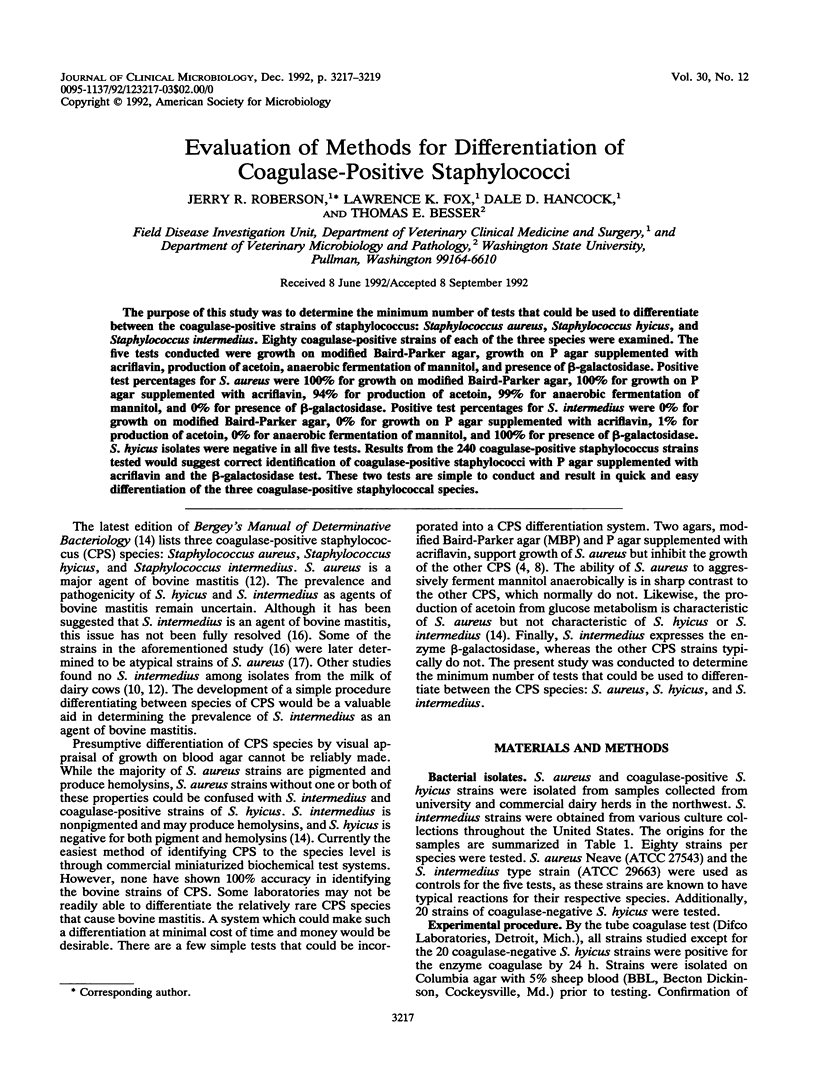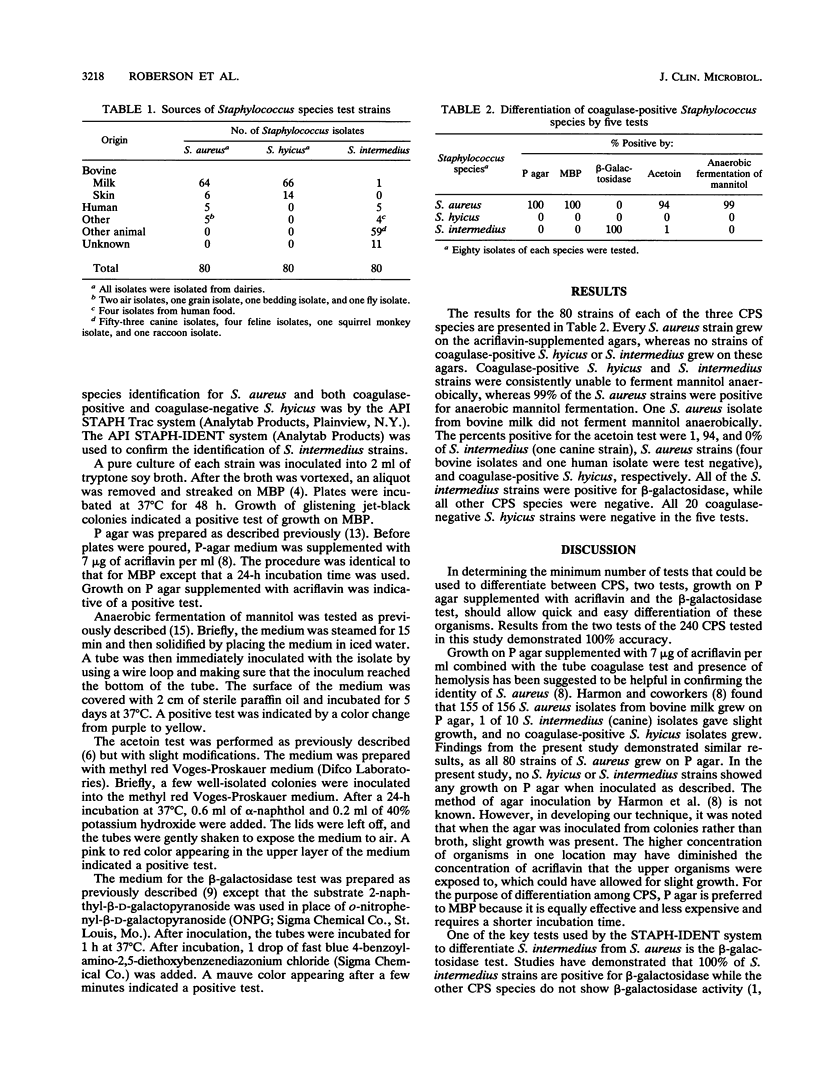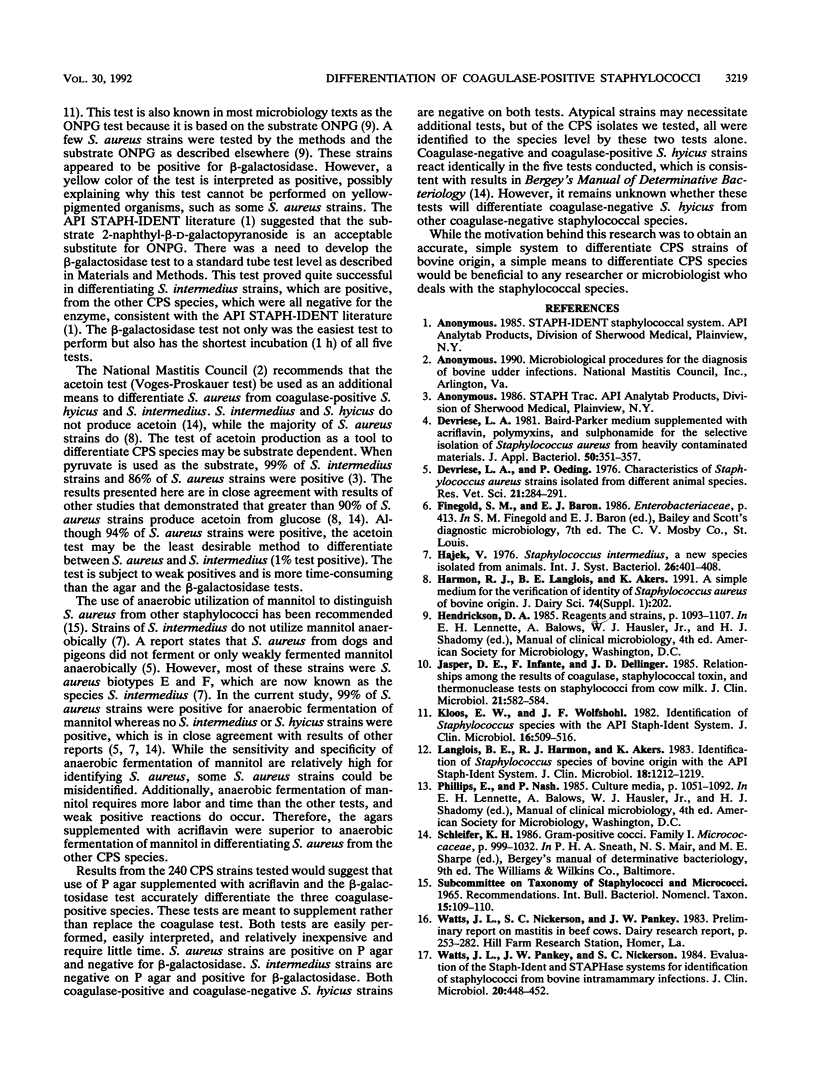Abstract
The purpose of this study was to determine the minimum number of tests that could be used to differentiate between the coagulase-positive strains of staphylococcus: Staphylococcus aureus, Staphylococcus hyicus, and Staphylococcus intermedius. Eighty coagulase-positive strains of each of the three species were examined. The five tests conducted were growth on modified Baird-Parker agar, growth on P agar supplemented with acriflavin, production of acetoin, anaerobic fermentation of mannitol, and presence of beta-galactosidase. Positive test percentages for S. aureus were 100% for growth on modified Baird-Parker agar, 100% for growth on P agar supplemented with acriflavin, 94% for production of acetoin, 99% for anaerobic fermentation of mannitol, and 0% for presence of beta-galactosidase. Positive test percentages for S. intermedius were 0% for growth on modified Baird-Parker agar, 0% for growth on P agar supplemented with acriflavin, 1% for production of acetoin, 0% for anaerobic fermentation of mannitol, and 100% for presence of beta-galactosidase. S. hyicus isolates were negative in all five tests. Results from the 240 coagulase-positive staphylococcus strains tested would suggest correct identification of coagulase-positive staphylococci with P agar supplemented with acriflavin and the beta-galactosidase test. These two tests are simple to conduct and result in quick and easy differentiation of the three coagulase-positive staphylococcal species.
Full text
PDF


Selected References
These references are in PubMed. This may not be the complete list of references from this article.
- Devriese L. A. Baird-Parker medium supplemented with acriflavine, polymyxins and sulphonamide for the selective isolation of Staphylococcus aureus from heavily contaminated materials. J Appl Bacteriol. 1981 Apr;50(2):351–357. doi: 10.1111/j.1365-2672.1981.tb00899.x. [DOI] [PubMed] [Google Scholar]
- Devriese L. A., Oeding P. Characteristics of Staphylococcus aureus strains isolated from different animal species. Res Vet Sci. 1976 Nov;21(3):284–291. [PubMed] [Google Scholar]
- Jasper D. E., Infante F., Dellinger J. D. Relationships among the results of coagulase, staphylococcal toxin, and thermonuclease tests on staphylococci from cow milk. J Clin Microbiol. 1985 Apr;21(4):582–584. doi: 10.1128/jcm.21.4.582-584.1985. [DOI] [PMC free article] [PubMed] [Google Scholar]
- Kloos W. E., Wolfshohl J. F. Identification of Staphylococcus species with the API STAPH-IDENT system. J Clin Microbiol. 1982 Sep;16(3):509–516. doi: 10.1128/jcm.16.3.509-516.1982. [DOI] [PMC free article] [PubMed] [Google Scholar]
- Langlois B. E., Harmon R. J., Akers K. Identification of Staphylococcus species of bovine origin with the API Staph-Ident system. J Clin Microbiol. 1983 Nov;18(5):1212–1219. doi: 10.1128/jcm.18.5.1212-1219.1983. [DOI] [PMC free article] [PubMed] [Google Scholar]
- Watts J. L., Pankey J. W., Nickerson S. C. Evaluation of the Staph-Ident and STAPHase systems for identification of staphylococci from bovine intramammary infections. J Clin Microbiol. 1984 Sep;20(3):448–452. doi: 10.1128/jcm.20.3.448-452.1984. [DOI] [PMC free article] [PubMed] [Google Scholar]


